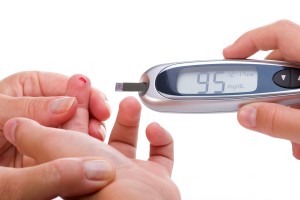 Managing Your Child’s Diabetes at School
Managing Your Child’s Diabetes at School
For parents of children with diabetes the beginning of the school year is especially stressful. Not only do you have to make sure his school supplies are eco-friendly and sustainable, you also have to make sure your child can effectively manage his diabetes during the school day.
If your child has type 1, he will need to have at least one blood sugar reading, and one insulin injection, during the day. If he has type 2, and is not at the insulin stage, he might need to take his medication during the day. There is also the issue of a possible diabetic emergency, such as a hypoglycemic attack. Even if your child is old enough to take care of himself, at school, you still need to have a Diabetes Management Plan in place.
Coordinate With the School
If your child is attending a new school, contact the administrative office well in advance of your child’s first day of school. All public schools must adhere to the Americans with Disabilities Act and provide reasonable accommodations for your child.
Coordinating with the school also ensures that the teachers and staff are aware of your child’s condition and can be on the lookout for signs of a possible emergency.
If your child is returning to the same school, you should touch base with the administration to ensure last year’s accommodations are still in place, or to make any changes or updates as needed.
Create a Diabetes Care Kit
The care kit should contain everything your child needs to manage his diabetes, including a glucose monitor, test strips, and his insulin or other medications.
To save space, and cut down on waste, consider using an insulin pen. With an insulin pen, you don’t need to have syringes, just the needles. This reduces landfill waste because you don’t have to throw away several plastic syringes per day. The added advantage of the insulin pen is that it does not need to be refrigerated, which will also reduce your carbon footprint.
An insulin pump is another convenient, and eco-friendly, option. It is a self-contained system, attached to your child’s body, that delivers insulin at specified times, and can even do glucose readings—so you don’t need to use test strips and a monitor. It is possible for a pump to fail, so you still need to have standard insulin syringes, or pens, and glucose monitoring supplies as a backup.
The kit should include healthy snacks that he can eat to manage his blood sugar, and an emergency source of glucose. If you don’t want to contribute to the mass-production of glucose tablets, you can choose eco-friendly, sustainable options, like raisins or other dried fruits, or a thermos of juice.
Use an eco-friendly toiletry case for your kit. These cases zip closed, they can fit in your child’s backpack or locker, and they come in a variety of sizes to meet your needs.
Because kids are often good at misplacing things, your best bet is to buy an extra glucose meter, and other supplies, so that you have a home kit and a travel kit.
Coordinate With Your Child
Make sure he is aware of the accommodations that are in place for him, and that he knows what to do, and where to go in an emergency. If you expect him to manage his own testing and injections, make sure he knows how to perform each step, and understands when he needs to administer his medication, and how to properly dispose of his testing supplies and needles.
Conclusion
Making sure you diabetic child’s needs are met can be challenging, but proper planning and communication, will help things run smoothly, and make the process eco-friendly.
Image: Glucose Level Blood Test on Bigstock
I strongly recommend parent 504 any child with on going medical concerns. The fact 504 is under the sped umbrella is off putting for some parents. But gifted is also SPED. In the 504 the parent should insist that all staff including specials teachers, pull out teachers, aides and subs be given a copy of the plan.
The reason is depending on how the district lawyers apply educational privacy laws you child’s teach might be prohibited from sharing medical info with non-professional staff. That means staff that do not have teaching licenses. Aides are often in charge of supervising lunch and recess, time medical emergencies are likely to happen.
By putting this in the 504, you are giving them permission in a legal document.
Hi, I stumbled across this post as it was a suggested related post for something I was writing about this morning. While I find most of the information here helpful and agree I just wanted to point out one inaccuracy. Insulin pumps do not test blood sugar. There are continuous glucose monitors that can be worn that monitor blood sugar but these do not replace the need for glucose meters and test strips and multiple tests per day, they are simply an additional tool to achieve better management.
Things to do to keep your child away from Type 2 and juvenile diabetes symptoms are- • Exercising,Healthy Diet,Restrict the hour,Kids hiking and activities and balanced weight.